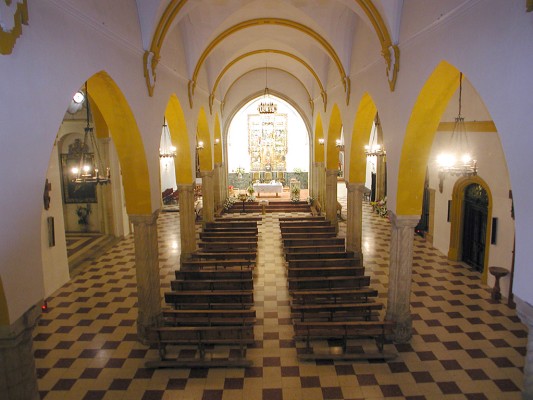On the top of the elongated hill on which Espejo stands we find the iglesia parroquial de San Bartolomé, built at the end of the 15th century and extended a century later.
It has three naves separated by pointed arches that rest on cruciform pillars with half adjacent columns, some of which are busts.
The jewel of this church is its magnificent Gothic altarpiece of San Andres, from the early 16th century, which contains five oil paintings on a panel by cordovan artist Pedro Romana, which represent el Calvario, the martyrdom of San Andrés and the Birth and adoration of the Three Kings.
The temple was enriched with several side chapels between the 16th and 18th century, including the ancient capilla del Sagrario, noteworthy on account of its size, which houses the image of Jesus Nazareno and which J. Rivas attributes to Tomás Jerónimo de Pedrajas.
This temple has an interesting museum of gold and silver articles, with pieces dating from between the 16th and 18th century, and a guide has been drawn up by the local chronicler Miguel Ventura; the eighteenth century processional monstrance finished by Bernabé García de los Reyes is worthy of mention.
On the simple exterior we find the lateral facade dating back to 1679, taken from the ermita de las Angustias, which no longer exists.




